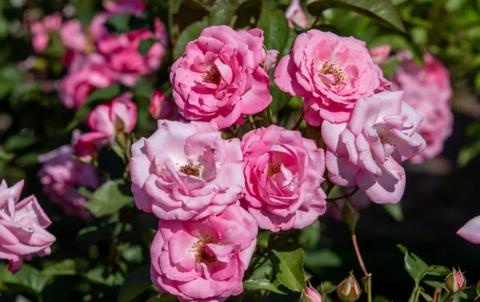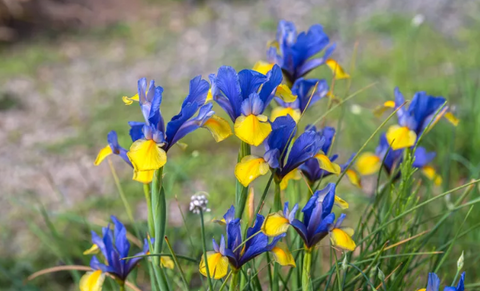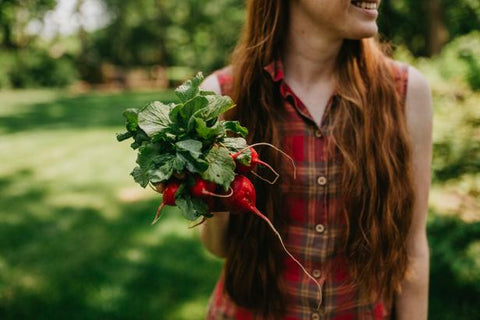Gardens are not just patches of greenery; they are vibrant ecosystems teeming with life. At the heart of this bustling biodiversity are pollinators, essential agents of plant reproduction. In this article, we'll explore how to cultivate a garden that attracts and supports these vital creatures, from bees and butterflies to hummingbirds.The following content also has some reference value for raised garden beds.
- Understanding Pollinators
- Creating a Pollinator-Friendly Garden
- Attracting Specific Pollinators
- Incorporating Pollinator-Friendly Features
- Seasonal Considerations
- Maintenance and Care
- Educational Opportunities
- Monitoring and Evaluation
- Celebrating Successes
- Conclusion
Understanding Pollinators
Definition of pollination
Pollination is a fundamental process in nature whereby pollen grains are transferred from the male reproductive organs (anthers) to the female reproductive organs (stigma) of a flower, leading to fertilization and the production of seeds. This essential biological process occurs through various mechanisms, including wind, water, and animal pollination.
Types of pollinators
Pollinators come in a dazzling array of shapes, sizes, and species, each with its own unique adaptations and behaviors. Bees, with their fuzzy bodies and specialized pollen-collecting structures, are among the most efficient and effective pollinators. Butterflies, with their delicate wings and long proboscises, flit gracefully from flower to flower, sipping nectar as they go. Hummingbirds, with their iridescent plumage and rapid wingbeats, are masterful pollinators of tubular flowers, relying on their long bills to access hidden nectar reserves.
Creating a Pollinator-Friendly Garden

Selecting native plants
Native plants have co-evolved with local pollinators over thousands of years, forming intricate relationships that support mutual survival and reproduction. By incorporating a diverse selection of native flowers, shrubs, and trees into your garden, you can provide essential food and habitat for pollinators throughout the year. Examples of native plants that attract pollinators include milkweed for monarch butterflies, bee balm for bumblebees, and penstemon for hummingbirds.
Providing diverse habitats
Diversity is the key to a thriving ecosystem, and the same holds for pollinator-friendly gardens. Create a mosaic of habitats within your garden, including sunny meadows, shady woodlands, and wetland margins, to cater to the varied preferences of different pollinator species. Plant a mix of flowering plants with different heights, colors, and bloom times to provide a continuous supply of nectar and pollen throughout the growing season.
Avoiding pesticides
Pesticides can have devastating effects on pollinators, disrupting their foraging behavior, reproductive cycles, and immune systems. To protect pollinators and other beneficial insects, minimize the use of chemical pesticides and opt for natural pest control methods whenever possible. Integrated pest management techniques, such as companion planting, crop rotation, and biological controls, can help manage garden pests without harming pollinators.
Attracting Specific Pollinators
Bees
Bees are some of the most effective and efficient pollinators, thanks to their fuzzy bodies and specialized pollen-collecting structures. To attract bees to your garden, plant a diverse array of flowers with open, accessible blooms in a range of colors, shapes, and sizes. Bees are particularly attracted to blue, purple, and yellow flowers, as these colors are most visible to their ultraviolet-sensitive eyes.
Butterflies
Butterflies are not only beautiful to behold but also important pollinators in many ecosystems. To attract butterflies to your garden, include a variety of flowers with flat, open blooms and provide sunny, sheltered resting spots for these delicate insects. Butterflies are especially attracted to flowers with bright colors, strong fragrances, and abundant nectar reserves.
Hummingbirds
Hummingbirds are tiny dynamos of pollination, drawn to tubular flowers with bright colors and copious nectar. To lure hummingbirds to your garden, plant a selection of trumpet-shaped blooms in shades of red, orange, and pink – their favorite colors. Hummingbirds are also attracted to flowers with long corollas and high nectar concentrations, such as salvia, penstemon, and fuchsia.
Incorporating Pollinator-Friendly Features

Water sources
Provide pollinators with access to clean, shallow water sources for drinking and bathing. Consider installing a birdbath, shallow dish, or small pond in your garden to attract thirsty insects and birds. Place water sources near flowering plants and sunny areas to make them easily accessible to pollinators.
Shelter options
Create cozy shelters and resting spots for pollinators to seek refuge from predators and harsh weather conditions. Install bee houses, butterfly roosting boxes, and hummingbird perches to enhance the habitat value of your garden. Provide sheltered areas with dense vegetation, such as shrubs, trees, and tall grasses, where pollinators can rest and hide.
Nesting sites
Many pollinators, such as solitary bees and wasps, require suitable nesting sites to rear their offspring. Offer nesting materials like hollow plant stems, bundles of twigs, and patches of bare soil to provide nesting opportunities for these beneficial insects. Avoid disturbing potential nesting sites and provide undisturbed areas where pollinators can safely raise their young.
Seasonal Considerations
Spring
In the spring, early-blooming flowers like crocuses, snowdrops, and hellebores provide crucial food sources for emerging pollinators. Plant a succession of spring-flowering plants to ensure a steady supply of nectar and pollen as pollinator activity ramps up. Provide sheltered areas for pollinators to warm up on chilly spring days and protect them from late frosts.
Summer
During the summer months, a profusion of flowering plants such as coneflowers, bee balm, and milkweed attract a diverse array of pollinators to the garden. Maintain a continuous bloom throughout the summer to sustain pollinator populations during the peak growing season. Provide shady resting spots and water sources to help pollinators beat the heat on hot summer days.
Fall
In the fall, late-blooming flowers like asters, goldenrods, and sedums provide essential resources for pollinators preparing for winter dormancy. Plant fall-flowering plants to fuel pollinators as they build up their energy reserves for the colder months ahead. Leave seed heads and spent flower stalks standing over the winter to provide food and shelter for overwintering pollinators.
Maintenance and Care
Regular watering
Keep your garden well-watered, especially during dry spells, to ensure that flowering plants produce ample nectar and pollen for pollinators. Provide supplemental water sources, such as drip irrigation or soaker hoses, to keep soil moisture levels consistent. Water early in the morning or late in the evening to minimize evaporation and reduce water stress on plants.
Pruning and deadheading
Prune flowering plants as needed to remove spent blooms and encourage continuous blooming throughout the growing season. Deadhead faded flowers regularly to prolong the availability of nectar and pollen for hungry pollinators. Use sharp, clean pruners to make precise cuts and avoid damaging plant tissue.
Monitoring for pests and diseases
Monitor your garden regularly for signs of pests and diseases that can harm pollinators and their host plants. Inspect plants for common pests such as aphids, spider mites, and caterpillars, and take action to manage infestations before they become severe. Practice good garden hygiene by removing diseased or infested plant material and disposing of it properly.
Educational Opportunities
Community workshops
Attend gardening workshops and community events focused on pollinator conservation and habitat restoration. Learn from local experts and fellow gardeners about the importance of pollinators and practical strategies for supporting them in your garden. Participate in hands-on activities, such as native plant propagation and insect identification, to deepen your understanding of pollinator ecology.
Gardening classes
Enroll in gardening classes offered by botanical gardens, nurseries, or extension offices to expand your knowledge of pollinator-friendly gardening practices. Explore topics such as plant selection, garden design, and sustainable landscaping techniques to create a pollinator paradise in your backyard. Connect with other gardeners and share your experiences and insights about pollinator conservation and habitat gardening.
Online resources
Explore online resources such as websites, blogs, and forums dedicated to pollinator conservation and habitat gardening. Connect with like-minded individuals and access a wealth of information, tips, and resources to help you create and maintain a pollinator-friendly garden. Join online communities and participate in discussions about pollinator-friendly plants, garden design ideas, and wildlife gardening techniques.

Monitoring and Evaluation
Observing pollinator activity
Take time to observe pollinator activity in your garden, noting the types of pollinators visiting different flowers and their foraging behaviors. Keep a journal or logbook to track pollinator sightings and document changes in pollinator populations over time. Use photography or video recording to capture close-up images of pollinators in action and share your observations with fellow gardeners and researchers.
Recording plant-pollinator interactions
Record plant-pollinator interactions by documenting which flowers are most attractive to different pollinator species. Keep track of flowering periods, bloom times, and nectar production levels to ensure a continuous supply of food for pollinators. Share your findings with local conservation organizations and contribute to citizen science projects aimed at monitoring pollinator populations and habitat quality.
Adjusting garden design as needed
Based on your observations and evaluations, make adjustments to your garden design and management practices to better support pollinators. Experiment with new plant combinations, habitat features, and maintenance techniques to optimize your garden for pollinator attraction and conservation. Seek feedback from fellow gardeners and conservation experts and collaborate on initiatives to enhance pollinator habitat at the community level.
Celebrating Successes
Sharing garden stories
Share your pollinator-friendly garden stories and experiences with friends, family, and fellow gardeners to inspire others to take action for pollinator conservation. Celebrate the beauty and diversity of pollinator habitats and the role that individual gardeners play in protecting these valuable creatures. Host garden tours and open houses to showcase your pollinator-friendly garden and engage with your local community.
Engaging with other gardeners
Connect with other gardeners in your community who share your passion for pollinator-friendly gardening. Join local gardening clubs, attend garden tours, and participate in plant swaps to exchange ideas, resources, and seeds for pollinator-friendly plants. Collaborate on community projects, such as pollinator garden installations and habitat restoration efforts, to amplify your impact and make a positive difference for pollinators.

Reflecting on the impact of pollinator-friendly practices
Take a moment to reflect on the impact of your pollinator-friendly gardening practices on local pollinator populations and ecosystems. Recognize the positive contributions you are making to biodiversity conservation and environmental stewardship through your gardening efforts. Share your successes and challenges with fellow gardeners and celebrate the collective achievements of the pollinator-friendly gardening community.
Conclusion
In conclusion, cultivating a pollinator-friendly garden is not only a rewarding pastime but also a powerful act of environmental stewardship. By understanding the needs of pollinators and creating habitat-rich gardens that support their survival and reproduction, we can contribute to the conservation of these essential species and ensure the health and vitality of our natural world for generations to come. So sow, grow, and pollinate with purpose and passion, and watch your garden come alive with the buzz of life.









